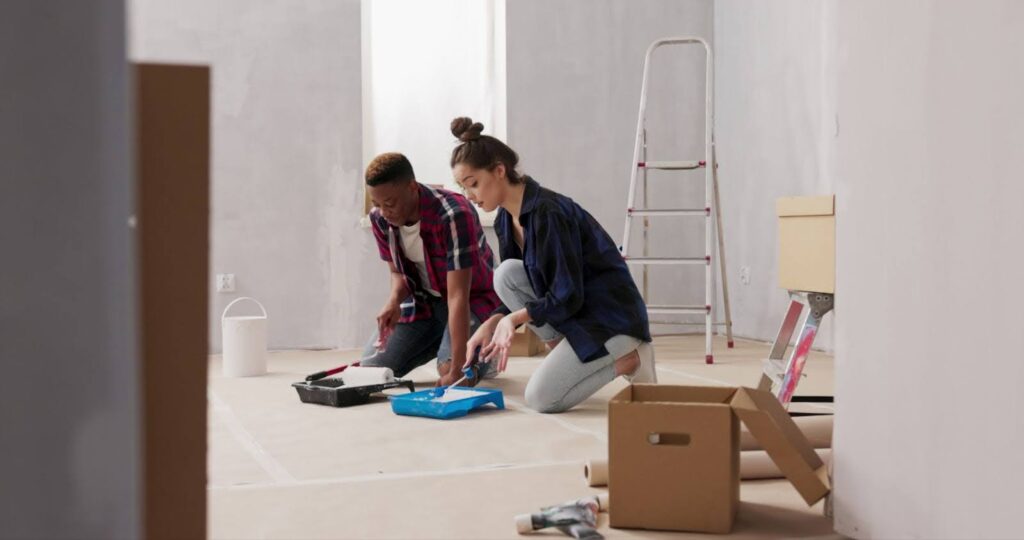Renovating an entire home is a big decision. It requires careful planning, time, and a realistic budget. When done right, a full renovation project can completely change the way a home looks and functions. It can also increase property value and make daily living more comfortable.
For those unsure where to start, this guide breaks down the process step by step to make it easier to understand and follow. Read on!
Step 1: Assess Your Current Home and Define Your Vision
Before any work begins, take a look at your home. Walk through each room and note its current condition. Start to envision how you’d like these spaces to be, too.
Consider your “why.” Why do you want to renovate your home? Is it to add more space, improve functionality, or update the style? This initial assessment will guide your entire renovation journey.
Focus on these key areas:
- Critical issues: What are the essential “must-fix” problems affecting the safety, structural integrity, or basic functions of your home? Hiring a professional inspector can be beneficial here. They can spot issues with the roof, foundation, electrical wiring, or plumbing that might not be visible at first glance.
- Style: What overall aesthetic and vibe do you want in your home? Creating a mood board with inspirational images, color palettes, and material samples can help solidify your vision.
- Functionality: How can the layout and existing features of your home be improved to support your daily life? Think about how you move through the spaces and your storage needs.
- Future needs: Think about how your needs might evolve over the coming years. Are you planning to expand your family? Do you anticipate needing more space for hobbies or work?
By thoughtfully considering these points, you’ll establish a clear direction for your full home renovation project.
Step 2: Consult Professionals
Even the most experienced homeowners need professional help during a full renovation. Start by choosing a reputable contractor. You can ask for recommendations from friends, family, or local real estate agents. Then, thoroughly check references and review their portfolios to ensure their experience aligns with your needs.
In cities like Sydney, it’s common to find builders who focus on specific types of projects. For example, some companies—including Double Diamond Construction—concentrate on home, bathroom, and kitchen renovations. Hiring specialists like them can be helpful when the renovation includes complex layout changes or detailed finish work.
Depending on the scale of the project, it may also be necessary to hire:
- An architect for layout changes or additions
- A structural engineer for major repairs
- Interior designers for finishing touches
Make sure everyone understands the goals and timeline before work begins. And remember, good communication between homeowners and professionals is key to avoiding delays and mistakes.
Step 3: Create a Realistic Budget
Budgeting is one of the most important parts of any renovation. For one, costs can add up quickly if not tracked. Start by researching average prices for materials and labor in the local area. It’s also a good idea to add a 10% to 20% buffer for unexpected expenses.
Break the budget into categories:
- Structural work
- Plumbing and electrical updates
- Flooring
- Kitchen and bathroom remodels
- Paint and finishes
- Furniture or appliances (if needed)
Using a spreadsheet or budgeting app can help you stay organized throughout the process.
Step 4: Make a Timeline
A full renovation doesn’t happen overnight. Depending on the size of the home and the amount of work needed, it may take weeks or even months. As such, creating a timeline helps everyone stay on track.
Start with a rough outline, then break it into smaller parts.
- Week 1–2: Demolition and clearing out
- Week 3–4: Structural work
- Week 5–6: Plumbing and electrical updates
- Week 7–8: Flooring and walls
- Week 9–10: Paint, finishes, and final touches
Keep in mind that delays can happen. Weather, backordered materials, or unexpected problems can push the timeline back. So, staying flexible but organized is the best way to manage the schedule.
Step 5: Secure Permits and Approvals
Many home renovation projects require permits from local authorities to ensure safety and compliance with building codes. So, before starting your project, check if you need approval for:
- Electrical rewiring
- Plumbing changes
- Additions or wall removals
- Roofing or structural repairs
Note that skipping permits can lead to fines or issues. A contractor can often help manage the paperwork, but it’s the homeowner’s responsibility to make sure everything is in order.
Step 6: Start With Demolition
Begin the demolition phase by removing old materials like flooring, cabinets, or even entire walls. Always wear appropriate safety equipment and consider temporary relocation for extensive projects.
Make sure to sort materials into what can be recycled, reused, or thrown away. You can also consider donating usable items like light fixtures or doors to reduce waste.
Step 7: Handle Structural Changes First
Structural work needs to be done before anything else is added. This part may include:
- Rebuilding damaged walls
- Reinforcing floors or ceilings
- Adding insulation or support beams
Once structural work is complete and approved by inspectors, the rest of the renovation can move forward.
Step 8: Update Electrical and Plumbing Systems
Replace outdated wiring, upgrade electrical panels, and reposition plumbing lines as needed—particularly crucial in kitchen and bathroom renovations.
Then, schedule mandatory inspections following these modifications to guarantee code compliance before proceeding with subsequent phases. This prevents costly rework and ensures both the safety and functionality of your home.
Step 9: Install Insulation and Drywall
Proper insulation can significantly impact your home’s energy efficiency, sound dampening, and overall comfort. You’ll have choices like fiberglass batts, spray foam, rigid foam boards, and cellulose, each with different benefits.
After the behind-the-scenes work is done, drywall panels are installed to create the walls and then sanded smooth. Consider moisture-resistant drywall for bathrooms and kitchens, and soundproofing drywall for media rooms or bedrooms. Ceilings are also repaired or replaced as needed.
Step 10: Install Flooring
Begin by ensuring subfloors are level, clean, and properly prepared. Flooring material choices vary depending on the room and budget, but common options include:
- Hardwood or laminate: Its durability, natural warmth, and beauty can elevate your living spaces.
- Tiles: They provide exceptional durability and water resistance, making them ideal for kitchens, bathrooms, and high-traffic areas.
- Carpet: Provides warmth, softness, and sound absorption, making it ideal for bedrooms and living areas where comfort is a priority.
When you have different types of flooring in each room, it’s important to plan for the right transition pieces. These help create a smooth and safe way to walk from one room to another.
Step 11: Add Color and Texture to Your Walls
Once your walls are smooth and ready, it’s time to bring in color and texture to change the feel of your spaces. When choosing paint, think about what each room is used for. Flat finishes, for instance, can conceal imperfections in low-traffic areas. Meanwhile, semi-gloss or satin provides durability in high-moisture or high-traffic spaces.
Besides paint, you can also opt for specialty wall treatments. Wallpaper, for instance, can bring your room to life, while textured finishes like Venetian plaster or wainscoting add dimensional interest.
Pro tip: Test paint colors on walls before committing, as lighting significantly impacts how colors appear throughout the day.
Step 12: Mount Cabinetry and Countertops

This step is where your kitchen and bathrooms really start to take form, both in how they look and how well they work. First comes the placement of the cabinets. Make sure they are level and lined up correctly. Usually, the cabinets that hang on the wall go in before the ones that sit on the floor, making it easier to move around.
Once the cabinets are in, it’s time for the countertops. The material you choose will affect both the look and how you use the space:
- Granite and Quartz: These are strong and look high-end, but because they are heavy, professionals usually need to cut and install them.
- Solid Surface: These can be joined together so you don’t see any seams, giving a smooth, continuous look.
- Laminate: This is a more affordable option and comes in lots of different colors and patterns.
Make sure your cabinets can properly support the weight of the countertop. Also, seal around sinks and where the countertop meets the wall to prevent water damage.
Step 13: Add Final Touches and Style
This is where you bring all the elements of your renovation together to create a cohesive space. Things like trim, lighting, furniture and furnishings, window treatments, wall decor, and even the hardware you select contribute significantly to the overall feel and style of your home.
These final selections are what complete the picture, transforming a renovated house into a home that truly reflects your taste and lifestyle.
Step 14: Clean Up and Inspect
Dust, debris, and construction materials often remain even after work is finished. So, a deep cleaning is necessary. Some homeowners hire a professional cleaning service to help.
Finally, conduct a thorough walk-through to create a punch list of any remaining items needing attention before considering your renovation complete. If a contractor is hired, this is also the time to ask about warranties or maintenance tips.
Conclusion
A full home renovation may seem overwhelming, but it can be more manageable when broken into steps. From proper planning and budgeting to hiring help and finishing with small details, every phase plays a part. With time and patience, any house can be turned into a beautiful and functional home. The reward is well worth the journey.

